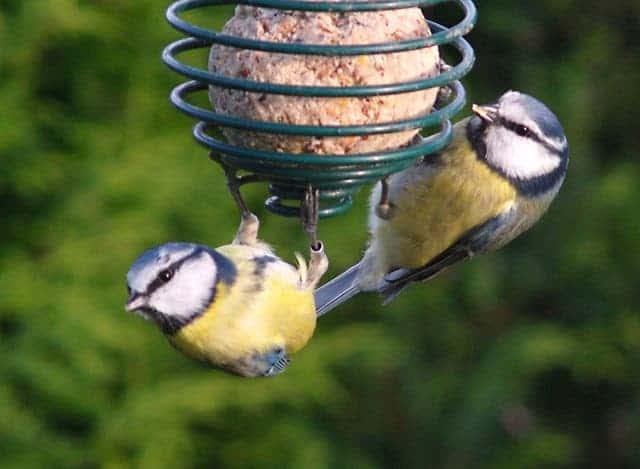New research from the University of Cambridge found that blue tits and great tits can learn to avoid unpleasant foods by watching their fellow birds eat on TV.

Image credits Dave Croker.
Seeing the ‘disgust response’ in their fellows helped the birds that took part in this study to avoid dangerous or unpleasant foods without having to try them themselves, the team reports. Later on, they recognize distasteful prey by their markings, potentially improving their survival rate.
The findings offer insight into how species share information regarding prey or food socially and help showcase the evolutionary benefits of banding together in groups or flocks.
Foodie shows
“Blue tits and great tits forage together and have a similar diet, but they may differ in their hesitation to try novel food. By watching others, they can learn quickly and safely which prey are best to eat,” said first author Liisa Hämäläinen, formerly a Ph.D. student at the University of Cambridge’s Department of Zoology and now at Macquarie University, Sydney.
“This can reduce the time and energy they invest in trying different prey, and also help them avoid the ill effects of eating toxic prey,”
The team worked with blue tits (Cyanistes caeruleus) and great tits (Parus major), in order to understand how and why prey avoidance behaviour spreads through populations of predators.
Blue tits and great tits forage together in the wild, so have many opportunities to learn from each other. If prey avoidance behavior spreads quickly through predator populations, this could benefit the ongoing survival of the prey species significantly, and help drive its evolution.
Many species of insects use bitter or toxic chemicals to deter predators. They usually advertise this with bright coloring and conspicuous markings. However, these ploys only work after a predator has learned to associate them with ‘undesirable’ prey. The findings of this study, however, shows that predators can learn which prey to avoid by watching other members of their group while trying to consume different insects.
The team showed each bird a video recording of another as it was eating distasteful prey. Some of the recorded birds displayed a disgust response (including vigorous beak wiping and head shaking) which the team hoped would help inform the watchers. This behavior was sometimes edited out to see if it would affect the watchers’ behavior.
The ‘prey’ shown on TV consisted of small pieces of almond flakes glued inside a white paper packet — some of these packets were soaked in a bitter solution. All packets had a marking on the side to help the birds better differentiate between them: a cross symbol that blended into the background for tasty packets, and a conspicuous square for the bitter ones.
When presented with these packets later on, the TV-watching birds (both blue tits and great tits) ate fewer of the bitter ones if they witnessed a disgust response to those packets in the footage, the team reports.
“In our previous work using great tits as a ‘model predator’, we found that if one bird sees another being repulsed by a new type of prey, then both birds learn to avoid it in the future,” said Dr. Rose Thorogood, who led the research.
“By extending the research we now see that different bird species can learn from each other too. This increases the potential audience that can learn by watching others, and helps to drive the evolution of the prey species.”
The paper “Social learning within and across predator species reduces attacks on novel aposematic prey” has been published in the Journal of Animal Ecology.
Was this helpful?



